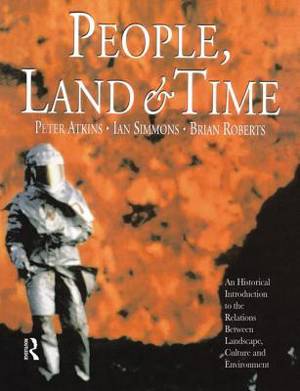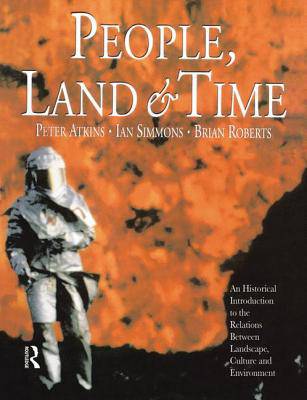
- Afhalen na 1 uur in een winkel met voorraad
- Gratis thuislevering in België vanaf € 30
- Ruim aanbod met 7 miljoen producten
- Afhalen na 1 uur in een winkel met voorraad
- Gratis thuislevering in België vanaf € 30
- Ruim aanbod met 7 miljoen producten
People, Land and Time
An Historical Introduction to the Relations Between Landscape, Culture and Environment
Brian Roberts, Peter Atkins, Ian SimmonsOmschrijving
This major new text provides an introduction to the interaction of culture and society with the landscape and environment. It offers a broad-based view of this theme by drawing upon the varied traditions of landscape interpretation, from the traditional cultural geography of scholars such as Carl Sauer to the 'new' cultural geography which has emerged in the 1990s. The book comprises three major, interwoven strands. First, fundamental factors such as environmental change and population pressure are addressed in order to sketch the contextual variables of landscapes production. Second, the evolution of the humanised landscape is discussed in terms of processes such as clearing wood, the impact of agriculture, the creation of urban-industrial complexes, and is also treated in historical periods such as the pre-industrial, the modern and the post-modern. From this we can see the cultural and economic signatures of human societies at different times and places. Finally, examples of landscape types are selected in order to illustrate the ways in which landscape both represents and participates in social change.
The authors use a wide range of source material, ranging from place-names and pollen diagrams to literature and heritage monuments. Superbly illustrated throughout, it is essential reading for first-year undergraduates studying historical geography, human geography, cultural geography or landscape history.
Specificaties
Betrokkenen
- Auteur(s):
- Uitgeverij:
Inhoud
- Aantal bladzijden:
- 304
- Taal:
- Engels
Eigenschappen
- Productcode (EAN):
- 9781138138483
- Verschijningsdatum:
- 22/12/2015
- Uitvoering:
- Hardcover
- Formaat:
- Genaaid
- Afmetingen:
- 189 mm x 246 mm
- Gewicht:
- 557 g

Alleen bij Standaard Boekhandel
Beoordelingen
We publiceren alleen reviews die voldoen aan de voorwaarden voor reviews. Bekijk onze voorwaarden voor reviews.










